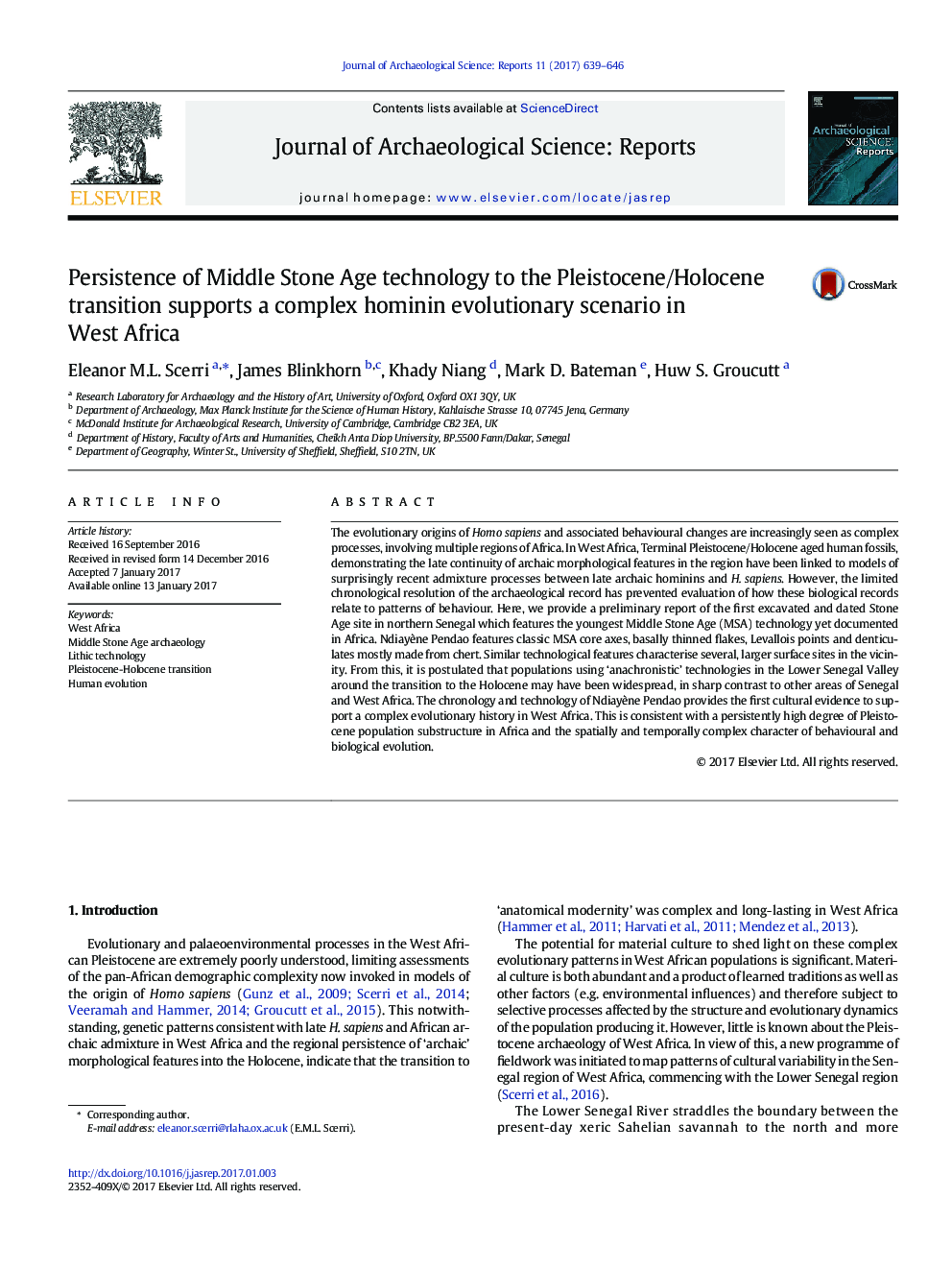| کد مقاله | کد نشریه | سال انتشار | مقاله انگلیسی | نسخه تمام متن |
|---|---|---|---|---|
| 5112608 | 1483932 | 2017 | 8 صفحه PDF | دانلود رایگان |
- The first dated Middle Stone Age (MSA) site in northern Senegal is presented.
- The site consists of classic MSA technology, with Levallois points and core axes.
- Samples were dated by Optically Stimulated Luminescence (OSL).
- OSL results date the MSA at Ndiayène Pendao to ~ 11.7 thousand years ago.
- Ndiayène Pendao is the youngest yet reported MSA site in Africa.
The evolutionary origins of Homo sapiens and associated behavioural changes are increasingly seen as complex processes, involving multiple regions of Africa. In West Africa, Terminal Pleistocene/Holocene aged human fossils, demonstrating the late continuity of archaic morphological features in the region have been linked to models of surprisingly recent admixture processes between late archaic hominins and H. sapiens. However, the limited chronological resolution of the archaeological record has prevented evaluation of how these biological records relate to patterns of behaviour. Here, we provide a preliminary report of the first excavated and dated Stone Age site in northern Senegal which features the youngest Middle Stone Age (MSA) technology yet documented in Africa. Ndiayène Pendao features classic MSA core axes, basally thinned flakes, Levallois points and denticulates mostly made from chert. Similar technological features characterise several, larger surface sites in the vicinity. From this, it is postulated that populations using 'anachronistic' technologies in the Lower Senegal Valley around the transition to the Holocene may have been widespread, in sharp contrast to other areas of Senegal and West Africa. The chronology and technology of Ndiayène Pendao provides the first cultural evidence to support a complex evolutionary history in West Africa. This is consistent with a persistently high degree of Pleistocene population substructure in Africa and the spatially and temporally complex character of behavioural and biological evolution.
Journal: Journal of Archaeological Science: Reports - Volume 11, February 2017, Pages 639-646
